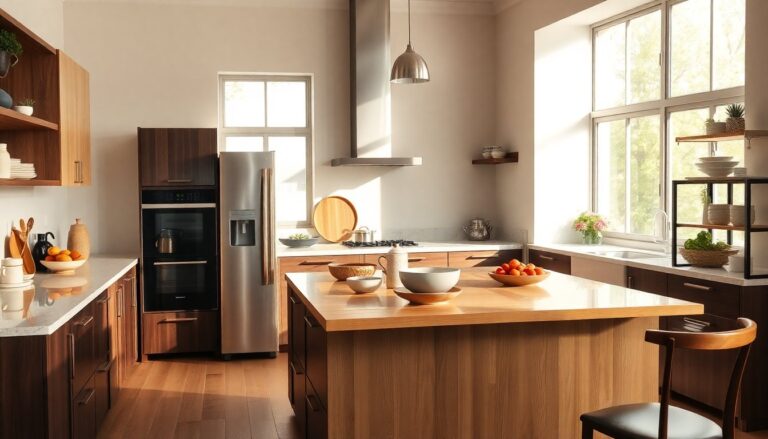Argomenti trattati
For many homeowners, the kitchen serves as the heart of the household, where family and friends gather. However, one element often disrupts the visual harmony of this cherished space. Designers have identified a feature that frequently receives criticism and provide straightforward solutions.
This article explores this common kitchen drawback, examining why it is perceived as unsightly and how simple adjustments can transform it into a stylish focal point.
Identifying the kitchen eyesore
One of the most frequently flagged aspects of kitchen design is the range hood. While essential for ventilation, its aesthetics often fail to meet expectations. Many homeowners find themselves with a hood that feels out of place, clashing with the kitchen’s overall style. This is particularly true in open-concept spaces, where the kitchen flows into the living area, making the range hood’s design even more critical.
A hood that does not match the kitchen’s theme can create a sense of disarray. Whether a hood is too bulky, oddly shaped, or lacks character, it can detract from the kitchen’s overall appeal. Designers emphasize that this feature, although functional, should not be an afterthought in terms of design.
Why the range hood matters
The range hood plays a vital role in maintaining air quality by removing smoke, steam, and odors. However, if it appears out of place, it can quickly become the focal point for all the wrong reasons. A well-designed range hood can enhance the kitchen’s aesthetic, creating a harmonious environment.
Moreover, a thoughtfully chosen range hood can complement cabinetry, countertops, and appliances, pulling the entire design together. Therefore, it is essential to view the range hood not just as a functional necessity but as a key design element that contributes to the kitchen’s overall ambiance.
Simple solutions to enhance your range hood
The good news is there are practical ways to address the range hood dilemma. First and foremost, consider the material and finish. Opting for a range hood that matches your cabinetry or appliances can create a seamless look. For instance, a sleek stainless-steel hood can pair beautifully with modern kitchens, while a wooden hood can add warmth to a rustic design.
Another effective strategy is to incorporate a custom design. Many designers recommend creating a hood that mimics the cabinetry, making it appear as if it was built into the kitchen rather than being an added element. This approach ensures the range hood complements the rest of the space, enhancing its aesthetic appeal.
Color and lighting considerations
When selecting a range hood, color plays a pivotal role. If the kitchen features a specific color palette, it may be beneficial to choose a hood that aligns with those colors. This can help create a cohesive look throughout the kitchen.
Additionally, integrating lighting into the range hood can elevate its visual impact. Installing LED lights can not only add functionality by illuminating the cooking area but also highlight the design of the hood itself. This dual benefit ensures that the range hood not only serves its purpose but also stands as a statement piece in the kitchen.
Considerations for kitchen design
This article explores this common kitchen drawback, examining why it is perceived as unsightly and how simple adjustments can transform it into a stylish focal point.0
This article explores this common kitchen drawback, examining why it is perceived as unsightly and how simple adjustments can transform it into a stylish focal point.1

